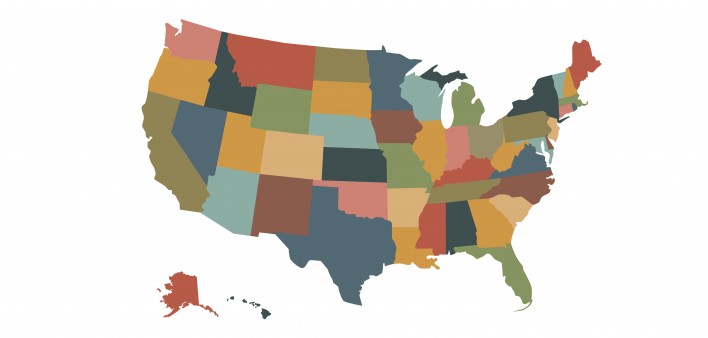Use of Truvada (tenofovir disoproxil fumarate/emtricitabine) as pre-exposure prophylaxis (PrEP) is falling considerably short in some of the populations that could most benefit from it, including African Americans, women, residents of the South, those living in poverty and young people. This is according to a new analysis that compared the HIV diagnosis rate in certain populations with each population’s PrEP-use rate to come up with a so-called PrEP-to-need ratio.
Aaron J. Siegler, PhD, a research assistant professor at Emory University in Atlanta, presented findings from the analysis in a poster at the 2018 Conference on Retroviruses and Opportunistic Infections (CROI) in Boston.

Aaron J. Siegler at CROI 2018 in Boston.Benjamin Ryan
To estimate the number of people currently using PrEP, Siegler and his colleagues relied on the Source Healthcare Analytics data set, which has notable limitations. For 28 percent of all Truvada prescriptions listed in the data set, there were insufficient data about the reason the drug was prescribed. This lack of precision is problematic because there is no specific diagnosis code for Truvada’s use as PrEP, making it a challenge for researchers to determine which prescriptions were written for HIV prevention and which were provided for the treatment of HIV or hepatitis B virus (HBV). Additionally, the data set did not include prescription information from various entities that do not share such data, including the U.S. Department of Veterans Affairs and closed health care systems that integrate health care delivery and pharmacy services, such as Kaiser Permanente.
Considering these limitations, the researchers’ conclusion that 61,298 people were currently taking PrEP during the second quarter of 2017 is most certainly an underestimate. Gilead Sciences, meanwhile, estimated last year that during the first quarter of 2017 136,000 people were on PrEP. The company recently estimated that by the third quarter of 2017, 153,000 U.S. residents were taking Truvada for prevention of HIV.
For the purpose of this new analysis of PrEP-to-need ratios, the estimate of the total number of PrEP prescriptions is not as important as are the relative differences in PrEP use between certain demographics and parts of the country—and in turn how the PrEP-to-need ratios differ. Hopefully, however, the limitations of the data set do not themselves bias the data such that they give a skewed representation of differences between PrEP-use rates or PrEP-to-need ratios—for example, if one race of individuals on PrEP were more likely than another to get their Truvada prescriptions filled from a source not included in the Source Healthcare Analytics data set.
Of the 61,298 individuals included in the analysis, 58,603 (95.6 percent) were male and 2,695 (4.4 percent) were female. (The study did not break down its analysis about men according to whether they had sex with men or women, but presumably almost all of these males were men who have sex with men, or MSM.) A total of 6,422 (10.5 percent) of the PrEP users were younger than 25, 24,144 (39.4 percent) were 25 to 34 years old, 15,197 (24.8 percent) were 35 to 44 years old and 4,866 (7.9 percent) were age 55 and older.
Nationally, 23.2 out of every 100,000 people were taking PrEP. Compared with the number of HIV diagnoses in 2016 according to Centers for Disease Control and Prevention (CDC) data, the national PrEP-to-need ratio was 1.5, meaning that 1.5 people were taking PrEP for each HIV diagnosis that year. A total of 45.5 males and 2.0 females per 100,000 people in each group took PrEP. Men’s PrEP-to-need ratio was 1.8 while women’s was 0.4, reflecting an obvious trend of MSM increasingly adopting PrEP while women’s use has remained relatively modest.
People under 25 had the lowest PrEP-to-need ratio among the age brackets: 0.8.
PrEP use per 100,000 people was highest in the Northeast region, at 38.5, and lowest in the South, at 18.8, and the Midwest, at 18.7. The Northeast had three times the PrEP-to-need ratio, at 2.9, compared with the South, at 0.9.
States that expanded their Medicaid programs under the Affordable Care Act (Obamacare) had a higher rate of PrEP use per 100,000 people, at 27, compared with non-expansion states, at 17.1, and also had a greater than double PrEP-to-need ratio: 2.1 versus 0.9.
States in the highest quartile of the proportion of residents living below the poverty line had lower PrEP use and a smaller PrEP-to-need ratio compared with states in the lowest quartile on this measure. Similarly, states in the highest quartile of the proportion of residents lacking health insurance had a lower PrEP-use rate and a smaller PrEP-to-need ratio compared with states in the lowest quarter on that count. And while states in the highest quartile of the proportion of African-American residents had higher statewide PrEP-use rates, they had lower PrEP-to-need ratios compared with states in the lowest quartile of Black resident concentration.
To read the conference abstract and to access the poster, click here.







Comments
Comments